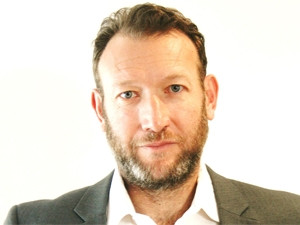
The Internet of everything (IOE) will redefine business over the next 10 years.
So says Grant Theis, co-founder of ttrumpet, who notes the IOE, essentially, is all about connections.
He believes the IOE presents a massive opportunity in SA "considering that by 2020, the amount of Internet-connected things is estimated to reach 50 billion, with $19 trillion in profits and cost savings coming from Internet of things over the next decade".
According to Cisco - which defines the IOE as the networked connection of people, processes, data and things - only 0.06% of things that could be connected to the Internet currently are, which means 10 billion things out of the 1.5 trillion that exist globally are currently connected.
It notes today, most people connect through their use of devices and social networks. As IOE evolves, people will connect in new and valuable ways. Wearables are already changing how people connect, says Cisco.
The networking company adds that with the correct processes, connections become more valuable as the right information is delivered to the right person at the right time in the most relevant way.
Rather than just data, connected things - aided by analytics - are increasingly delivering intelligence and actionable information to both people and machines for better decisions and results, it points out.
Physical objects that are connected to the Internet and each other increasingly sense more data, become context-aware, and provide more experiential information to aid both people and machines, Cisco says.
"I believe this is an exciting space to be in currently, and the projected growth is massive for the industry, which bodes well for South African businesses that are open and willing to capitalise on the opportunities IOE presents," Thies says.
"As things and objects get embedded with electronics, software and sensors, they can connect to the Internet."
He adds these devices collect useful data with the help of various existing technologies and then autonomously flow the data between other devices. "This goes beyond machine-to-machine technology though, allowing things that perhaps you would not necessarily think could collect data, to do so and make an impact.
"Think of a pacemaker, which connects to your smartwatch and allows you to monitor your heart rate and actively manage your health. Now apply this same scenario to a plethora of things - therefore, when you add the 'Internet of you' to the 'Internet of things', it essentially becomes the Internet of everything," he explains.
The IOE makes connected things act autonomously based on real-time analysis of things, people, processes and data, Theis points out.
"Cows are already posting updates from the fields, individual products transported by sea are reporting when they have fallen over, pills are reporting back to doctors that the correct dosage has been taken, cars report real-time performance data that affect insurance premiums," he says.
Nonetheless, as the IOE grows, Theis says data security and privacy are important issues that will have to be solved.
"The world lives in the cloud today and IOE will follow the same path. Objects or 'things' will generally not have security embedded in them due to scalability and cost. Security will, therefore, sit in the cloud and it is going to be up to that industry that currently deals with breaches and privacy to continue their efforts into making IOE secure," he concludes.
Share